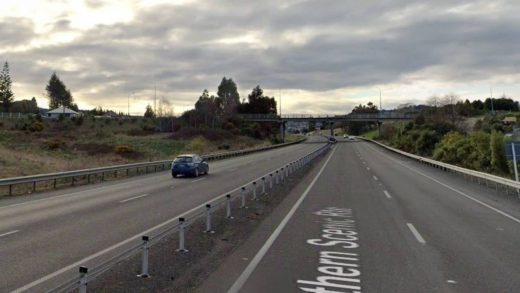
Increasing numbers of prisoners with gang affiliations, a history of violence or a disorder are being blamed for prison repair costs growing.
Department of Corrections figures show the cost of fixing intentional damage at New Zealand’s 18 prisons was $5.1 million in the 2021-22 financial year – the highest it has been in the past five years.
Over the same time, the prison population decreased 25% as part of efforts to reduce prisoner numbers, falling from 10,394 in December 2017 to 7618 in December 2021.
Chief custodial officer Neil Beales said prisons can be volatile environments, with many prisoners acting unpredictably, including damaging property.
READ MORE:
* Convicted killers break out of cells and cause thousands of damage
* Auckland prison ‘chaos’: suspected gang initiation among eight assaults on staff this month
* Rooftop prison standoff by teen inmates likely a ‘cry for help’
More than 80% of prisoners have a history of violence and more than 90% have a lifetime diagnosis of a mental health or substance abuse disorder, Beales said.
“Additionally, 35% have a gang affiliation, which is a known predictor of violence,” he said.
This number has increased in recent years, mirroring the growth in gang membership in communities, he said.
SUPPLIED
Corrections chief custodial officer Neil Beales says many prisoners have a history of violence, while a growing number are affiliated with gangs. (File photo)
One prisoner of Northland Region Corrections Facility, also known as Ngāwhā prison, is facing charges of arson which could have caused a threat to life, alongside five other charges of intentionally damaging his cell.
Freeman Price Fraser, 26, faces up to 14 years in prison if convicted of arson and seven years for the other damages – including damaging windows, a shelf, sinks and toilets and sprinklers at the prison.
Appearing in the Whangārei District Court on Wednesday, Fraser entered no plea to the charges and was remanded in custody until August 17.
Beales said he could not comment on a matter that was before the courts.
Denise Piper/Stuff
Freeman Fraser is accused of damaging his cell at Northland Region Corrections Facility six times. (File photo)
Corrections Minister Kelvin Davis said those who come into prison have a variety of backgrounds and behaviours.
“We do not condone violence of any nature or vandalism of any Corrections property. That said, when individuals arrive into the care of Corrections, they can often be at some of the most challenging and low points in their lives,” he said.
“Corrections has a number of programmes to address the many rehabilitative needs of inmates, and these can include programmes to address violent behaviour.”
But Davis said the rising costs were also due to rising building costs, which were a result of supply chain pressures from the global pandemic.
ROBERT KITCHIN/Stuff
Corrections Minister Kelvin Davis says the cost increase is partly due to the rising cost of construction. (File photo.)
National corrections spokesperson Simon O’Connor said the repair costs increasing was unsurprising, and went alongside a very high level of assaults on Corrections officers and other prisoners.
Those on the frontline say they are stretched and the violence is getting worse, he said.
This was illustrated in June when a staff member from Hawke’s Bay Regional Prison was repeatedly stabbed in the face in what has been called a savage, violent and unprovoked attack.
Earlier this week, six inmates in Hawke’s Bay youth unit barricaded themselves onto a rooftop of the prison – which damaged the facility, O’Connor said.
He believed the only way to reduce the damage was to ensure there are proper consequences for poor behaviour.
“Those on the frontline report there is often little done currently, be that damage to property or poor behaviour directed to Corrections staff,” he said.
“If a prisoner damages property, then there should be real consequences and not simply a verbal telling off.”


